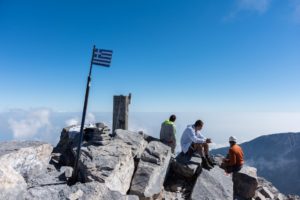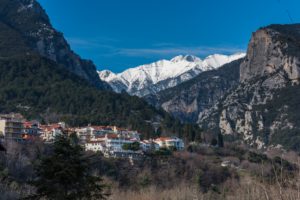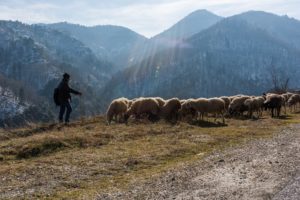UNESCO Biosphere Reserve
Due to its outstanding natural and cultural importance, Olympus was designated as a Biosphere Reserve in 1981 with its inclusion in the UNESCO Man and Biosphere Program (MAB).
UNESCO Biosphere Reserves (BR) comprise example sites of excellence wherein the protection and management of the natural environment is in harmony with the social and economic development of local communities. Mount Olympus Biosphere Reserve spans an area of 37402,51 ha, and surrounds the massif and foothills of the mountain. The main economic activities in the BR are tourism, pastoralism, forestry, and agriculture.
The objectives and preconditions of inclusion of the program are delineated in the Statutory Framework of World Network of BR and the Seville Strategy (MAB UNESCO 1995) as well as in the action plans that are updated /revised approximately every decade (Lima Action Plan, 2016-2025).
Specifically, Biosphere Reserve ought to serve three basic functions:
Conservation – contribution to the preservation of natural landscapes, ecosystems, species and genetic diversity,
Development – promotion of economic and human development, which is socio-culturally and ecologically sustainable,
Logistic support – support for demonstration projects, environmental education and training, research and monitoring related to local, regional, national and international issues of conservation and sustainable development.
In order to fulfill their basic function, BR’s must have an appropriate zonation scheme which recognizes and includes:
The Seville Strategy further specifies that:
Mount Olympus Biosphere Reserve - at a glance…

| Total Area | 37.402,51 ha |
|---|---|
| Core area | 3.470,982 ha |
| Buffer zone | 20.090,736 ha |
| Transition area | 13.840,792 ha |
| Location | Northern Greece, Regions of Central Macedonia and Thessaly |
| Local administration | Municipality of Dion-Olympos & Katerini in the Prefectural Unit of Pieria Municipality of Elassona, in the Prefectural Unit of Larissa |
| Population | Approximately 1000 (seasonal and permanent residents) |
| Management | Olympus National Park Management Agency, under the supervision of the Ministry of Environment and Energy, Forestry Directorate of Pieria, Forestry Service of Elassona |
| Ecosystems | Conifer forests, mixed conifer and deciduous forests, evergreen sclerophyllous vegetation, maquis, alpine meadows and montane grasslands, rocks and screes, rivers/streams |
| Main human activities | Tourism, nature-related activities, non-intensive agriculture and pastoralism, forestry, research, and environmental education |
For more information on Biosphere Reserves and the UNESCO Man and the Biosphere Program, please visit http://www.unesco.org/new/en/natural-sciences/environment/ecological-sciences/man-and-biosphere-programme/








